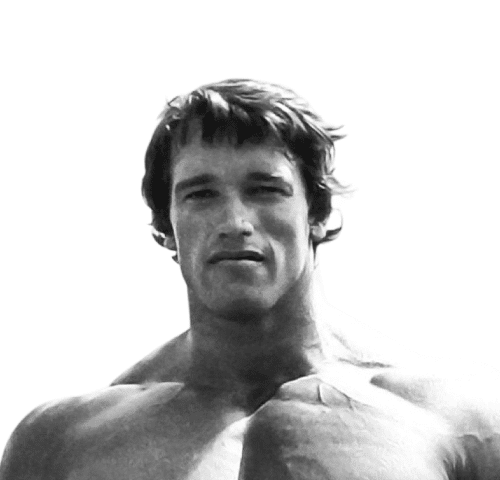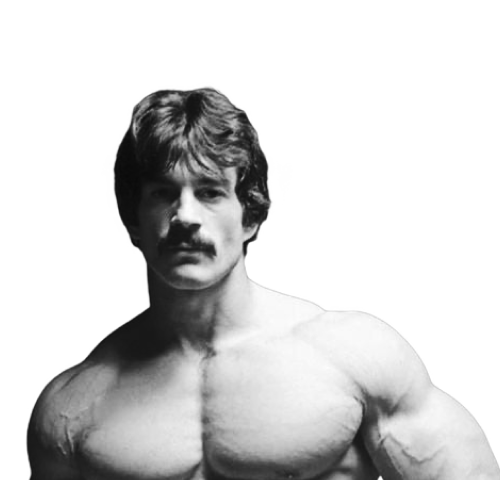Ronnie Coleman’s Workout Routine in 2025

The Heavy Lifts That Built a Legend
Ronnie Coleman is one of the most well-known bodybuilders in the world, famous for his size, strength, and hard work in the gym. His workout routine was intense, built around heavy lifting and strict training schedules. This article breaks down the different parts of Ronnie Coleman’s workout routine, from his chest and back days to his leg and arm sessions.
- Last Updated: August 5, 2025
- High-Intensity Training Philosophy
- Weekly Workout Split Overview
- Monday’s Upper Body Power Workout
- Tuesday’s Lower Body Mass Session
- Wednesday’s Chest and Triceps Power Session
- Supplement Support
- Building Back Width and Biceps on Thursday
- Friday’s Quad and Hamstring Smash Training
- Saturday’s Chest Triceps and Calves Routine
- Sunday Rest Day
- Workout Injuries
-
-
High-Intensity Training Philosophy
Ronnie Coleman built his training style around pushing physical limits with incredible effort and discipline. This high-effort approach became the foundation of a workout routine focused on heavy lifting, high volume, and intense consistency, core traits of the most well-known workout plans in bodybuilding.
- Heavy lifting with high reps: Most sets involved lifting as much weight as possible while still pushing through 8 to 20 reps. This allowed for both muscle overload and deep fatigue in a single set, which contributed to growth.
- Focus on free weights: Free weights were his go-to for major lifts because they challenged balance, coordination, and full-body strength. Whether it was barbell squats or dumbbell presses, each rep demanded full control.
- Compound movements first: Big lifts like deadlifts, rows, and military presses took priority in every session. These exercises worked multiple muscle groups and built the foundation for strength in isolation lifts later.
- High volume approach: A typical session lasted 2 hours, often including over 40 sets. Each body part got intense attention, with several exercises and multiple sets to fully exhaust the muscle.
- Extreme consistency: He trained six days a week, rarely missing a session. Even with a demanding job, he would be in the gym by noon every day, showing how serious discipline shaped his progress.
- Minimal use of machines: Machines were used occasionally, but free weights remained the core of his workouts. He believed they activated more muscle fibers and gave better control over each movement.
- Relentless mindset: He believed in working harder than everyone else, repeating that there were no shortcuts. That mindset created the mental toughness needed to push through failure and keep improving.
This kind of thinking shaped the core of the Ronnie Coleman workout routine and made it stand out. Few trained with this level of effort, and that’s what helped him achieve results that still inspire lifters today.
Hard work and training. There’s no secret formula. I lift heavy, work hard and aim to be the best.
-
Weekly Workout Split Overview
Ronnie Coleman followed a consistent training structure that allowed him to train hard six days a week while hitting each muscle group more than once. This smart layout helped him stay focused and avoid burnout during the most intense years of his career.
- Monday—Back, Biceps & Shoulders: Focused on heavy pulling movements like barbell rows and deadlifts to build back thickness. This session also included standing curls, hammer curls, and overhead presses to kick off the week with full upper-body volume.
- Tuesday—Quadriceps, Hamstrings & Calves: Centered around heavy squats, walking lunges, and leg presses for size and strength. Hamstrings were hit with stiff-leg deadlifts and curls, while seated and standing calf raises were added to round out the session.
- Wednesday—Chest & Triceps: Prioritized mass-building lifts such as flat bench, incline dumbbell press, and dips. Triceps were trained with skull crushers, rope pushdowns, and close-grip presses to fully exhaust the muscle.
- Thursday—Back, Biceps & Shoulders: Focus shifted to back width using lat pulldowns, cable rows, and machine-assisted pull-ups. Lighter isolation for biceps and rear delts was added to complement the heavier start of the week.
- Friday—Quadriceps, Hamstrings & Calves: Featured exercises like front squats, hack squats, and leg extensions with higher rep ranges. Romanian deadlifts and single-leg curls targeted hamstrings, while calves were trained using varied angles.
- Saturday—Chest, Triceps, Calves & Abs: Combined chest presses with more triceps volume, along with seated calf raises and multiple ab exercises like leg raises, crunches, and cable crunches to work the core.
- Sunday—Rest Day: Reserved for full recovery, giving the muscles time to rebuild after six intense training days focused on volume and progressive overload.
Sticking to this schedule provided the consistency and intensity needed to train at a high level. It became a key part of the Ronnie Coleman workout schedule, helping him maintain peak performance across all muscle groups.
-
Monday’s Upper Body Power Workout
Ronnie Coleman began the week with one of his most intense training days. By focusing on multiple pulling muscles and finishing with shoulders, he packed a massive amount of volume into a single session. This approach helped him build thickness, size, and strength right from day one.
- Deadlifts: 4 sets of 6–12 reps with extremely heavy weight, sometimes going up to 800 lbs. This lift was central to his back development, engaging his glutes, hamstrings, lower back, traps, and spinal erectors—all in one powerful movement.
- Bent-Over Barbell Rows: 3 sets of 10–12 reps using very high loads, often exceeding 500 lbs. This movement targeted his mid-back, lats, and rhomboids, helping him add dense, thick muscle across the upper portion of his back.
- T-Bar Rows: 3 sets of 8–12 reps using a close grip to emphasize inner back development. He loaded up the machine with four to five plates, allowing him to hammer the midline of his back for more depth.
- One-Arm Dumbbell Rows: 3 sets of 10–12 reps using dumbbells as heavy as 200 lbs. Training one side at a time let him stretch and contract each lat fully, increasing lower lat detail and fixing any side imbalances.
- Barbell Curls: 4 sets of 8–12 reps with an Olympic bar, sometimes curling up to 200 lbs. This was his primary mass-building move for the biceps, focusing on strict form to hit the muscle hard.
- Alternating Dumbbell Curls: 3–4 sets of 10–12 reps, typically with 70–90 lb dumbbells in each hand. The goal was to isolate each bicep individually, increasing overall arm symmetry and muscle control.
- Preacher Curls: 3–4 sets of 10–12 reps using an EZ-bar or machine. This curl variation placed constant tension on the lower portion of the biceps, helping him build roundness and improve the overall shape of the muscle.
- Seated Military Press: 3–4 sets of 8–12 reps performed with a barbell or Smith machine. This heavy pressing movement built the foundation for front and middle delt strength and thickness.
- Seated Dumbbell Shoulder Press: 3–4 sets of 8–12 reps with dumbbells up to 160 lbs. On some days, he added a burnout set using lighter weights in a front press motion to completely exhaust the delts.
- Front or Lateral Raises: 3 sets of 10–15 reps focusing on isolation. He used dumbbells or cables to hit either the anterior or medial deltoids, depending on what had already been taxed by pressing movements.
- Ab Training: Performed four times a week, often after workouts. He used basic exercises like crunches, twisting sit-ups, and reverse crunches for three sets to failure, keeping his midsection strong and functional.
This stacked training day was a key part of the Ronnie Coleman shoulder workout, helping him build raw pressing strength, deep back thickness, and massive arm size, all in one brutal session.
-
Tuesday’s Lower Body Mass Session
Ronnie Coleman treated leg day like a full-body test. It wasn’t just about lifting heavy, it was about pushing every muscle in his lower body to the limit. His Tuesday training was intense, demanding, and left no room for shortcuts.
- Back Squats: Ronnie worked through 5 to 6 total sets, starting with lighter weight and pyramiding up to 800 lbs for lower reps. He often used a scheme like 12, 10, 8, 6, and 2 to build maximum power and thickness in his legs.
- Leg Press: A typical session included 4 to 5 sets of 8 to 12 reps, with the total sled weight often exceeding 2,000 lbs. This allowed him to fatigue his quads and glutes further without stressing his spine.
- Walking Lunges: For these, he carried more than 300 lbs on his back and took long, controlled strides for 2 to 3 sets per leg. Each lunge lasted around 50 yards and helped build separation in the quads and hamstrings.
- Stiff-Legged Deadlifts: Using about 315 lbs, Ronnie hit 3 sets of 10 to 12 reps with strict form. The goal was to stretch and contract the hamstrings fully while protecting the lower back.
- Leg Curls (Seated or Lying): His machine work included 3 to 4 sets in the 12 to 15 rep range. Weights varied, but he often stacked up 200 lbs on seated curls or used single-leg variations to increase focus.
- Standing Calf Raises: If trained on this day, calves were hit for 4 sets of 12 reps. Ronnie favored full stretches and strong contractions with moderate to heavy weight, depending on the session.
Ronnie Coleman’s leg workouts were built around pure effort and intensity. With heavy squats, high-rep lunges, and volume-packed isolation work, this leg day became a brutal part of his workout routine.
-
Wednesday’s Chest and Triceps Power Workout
Mid-week, Ronnie Coleman shifted focus to his pushing muscles. Chest and triceps day combined heavy pressing strength with high-volume isolation work. It wasn’t just about lifting, it was about attacking the muscle from every angle.
- Flat Barbell Bench Press: This was the foundation of his chest routine. Ronnie typically worked through 5 sets, pyramiding up in weight and often pressing 495 lbs for reps. He used a structure like 12, 10, 8, 6, and 4 to build raw strength and thickness in the pecs.
- Incline Barbell Bench Press: Usually done after flat bench, Ronnie hit 3 sets of 10 to 12 reps using weights around 400 lbs. Even when fatigued, he pushed big numbers on incline to build the upper portion of his chest.
- Flat Dumbbell Press or Flyes: He’d rotate between these two for 3 to 4 sets, aiming for 10 to 12 reps. With dumbbells often between 150 and 200 lbs, the goal here was to stretch and contract the chest fibers with full control.
- EZ-Bar Skull Crushers: For triceps, he performed 3 to 4 sets of 10 to 12 reps using a cambered bar. Handling over 200 lbs, he lowered the bar behind or to his forehead to hit the long head of the triceps hard.
- Overhead Dumbbell Triceps Extension: This movement was done seated with one heavy dumbbell, sometimes up to 170 lbs. Across 3 to 4 sets of 10 to 12 reps, he built thickness in the upper arm by isolating the long head.
- Close-Grip Bench Press: To finish triceps, Ronnie went for 4 sets of 8 to 12 reps using a shoulder-width grip. With 315–350 lbs on the bar, this exercise not only hit the arms but also added pressing volume to the chest.
- Ab Training: Like other training days, he added abs here too. Movements like crunches and leg raises were performed for 3 sets to failure, keeping his midsection tight and strong under heavy loads.
Chest and triceps day was a major strength-building block in the Ronnie Coleman chest workout, combining powerlifting intensity with bodybuilding volume to deliver serious size and definition.
-
Supplement Support
The Ronnie Coleman workout routine demands intense training, consistency, and serious recovery. For lifters trying to follow this approach, the right supplements can help support energy, strength, recovery, and long-term performance.
- Pre-workout energy boost: A well-formulated pre-workout can sharpen focus and increase stamina, making it easier to stay locked in through long, high-volume sessions. Caffeine, beta-alanine, and citrulline are common ingredients that help push through fatigue.
- Whey protein for muscle repair: Fast-absorbing whey provides essential amino acids that support muscle recovery and growth. Taking it after each session helps repair broken-down fibers and kick-start protein synthesis.
- Creatine for improved strength: Creatine monohydrate supports short bursts of power, perfect for heavy lifts like squats, deadlifts, and rows. It can also help build muscle fullness and support consistent performance across sets.
- BCAAs to reduce soreness: Branched-chain amino acids can support intra-workout endurance while also easing post-workout soreness. They’re especially useful when training fasted or during cutting phases.
- Multivitamins for overall wellness: Hard training increases nutrient demands. A high-quality multivitamin helps support immune function, energy metabolism, and recovery.
- Fish oil for inflammation and joint health: Omega-3s from fish oil can support heart health and help reduce inflammation in the joints and muscles, improving mobility and recovery between sessions.
- Electrolytes for hydration: Heavy sweating during long workouts can lead to dehydration. An electrolyte blend with sodium, potassium, and magnesium supports hydration and performance, especially during summer months or two-a-days.
- Glutamine for recovery and immune support: Glutamine levels can drop during intense training. Supplementing may help support gut health, reduce muscle soreness, and aid overall recovery between sessions.
- Beta-alanine for muscular endurance: Known for its tingling sensation, beta-alanine helps buffer lactic acid, delaying muscle fatigue during long sets.
Using supplements wisely can help support the intensity, recovery, and consistency needed to keep up with this workout plan while reducing the risk of burnout or injury.
-
Building Back Width and Biceps on Thursday
By the fourth day of his split, Ronnie Coleman circled back to familiar muscle groups with a new focus. Instead of chasing thickness like Monday, Thursday’s goal was to build width, especially in the back and shoulders, through targeted angles and different rep schemes.
- Wide-Grip Barbell Rows: These remained a staple with 4 to 5 sets of 8 to 12 reps, sometimes using 585 lbs before dropping down for higher-rep sets. He’d widen his grip to target the outer lats more directly and improve back spread.
- Cable or Machine Rows: Performed for 4 sets in the 12 to 15 rep range, these seated or hammer-style rows were all about squeezing and stretching the lats. He used these to hit his back from different angles not covered by free weights.
- Lat Pulldowns (Front & Behind Neck): Each version was done for 3 sets of 8 to 12 reps. Ronnie rotated between wide-grip front pulldowns and behind-the-neck pulldowns to fully stretch the lats and promote width through variation.
- Incline Dumbbell Curls: For biceps, he used 70 to 90 lb dumbbells across 4 sets of 10 to 12 reps. Training on an incline allowed for a deeper stretch at the bottom and more activation through the full range of motion.
- Machine Curls Superset with Cable Curls: These supersets included 3 to 4 rounds of 12 reps per exercise. He’d do heavy preacher curls followed immediately by standing cable curls, flooding the arms with blood for maximum pump and growth.
- Spider Curls or Concentration Curls: Occasionally, Ronnie included 3 sets of 10 to 12 reps using a preacher bench or single-arm concentration curl to finish off the biceps with focused isolation and full control.
- Seated Dumbbell Press: Thursday’s shoulder work started with dumbbell presses instead of barbells. Across 4 sets of 8 to 10 reps, he pushed up to 160–170 lb dumbbells while grinding out every rep close to failure.
- Lateral Raises (Dumbbell or Machine): These were done for 3 sets of 10 to 15 reps. If on the machine, he might use the entire weight stack; with dumbbells, he went moderately heavy and aimed to burn out the medial delts with slow, controlled reps.
- Front Raises: Used to bring out the front delts, these were added for 3 sets of 10 to 15 reps using a plate or dumbbell. He rotated these in when his anterior delts needed more work after pressing.
- Rear Delt Work: Occasionally included with 3 sets of 12 reps, these exercises involved reverse pec-deck flyes or bent-over dumbbell laterals to balance shoulder development and avoid weak points.
- Forearm Training: Finished with 5 to 6 sets of 15 reps using reverse barbell curls or wrist curls. While his forearms were already taxed from heavy back work, this isolated work added detail and strength.
This wide-focused session balanced out the earlier back workout Ronnie Coleman performed, targeting outer lats, biceps, and shoulders with high volume and smart exercise selection, an important piece of his overall workout program.
-
Friday’s Quad and Hamstring Smash Training
Friday marked the second leg day of the week and came with just as much intensity as earlier sessions. By splitting lower body training into two separate days, Ronnie gave each muscle group more focused attention. The exercises on this day leaned into different angles and techniques, offering a fresh challenge despite already having trained legs earlier.
- Front squats for quad focus: Instead of traditional back squats, he used front squats to shift the emphasis onto the teardrop muscles of the quads. He could go as heavy as 585 pounds using a cross-arm grip, often pushing for around 10 to 12 reps per set.
- Leg extensions to burn out the thighs: To really isolate his quads, he used the full stack for high-rep sets of 15 to 30. This gave his quads a hard pump and was often saved for the end of the workout when his legs were already fatigued.
- Hack squats with full control: Using 800 to 900 pounds on the machine, he performed 3 sets of 10 to 12 controlled reps. This version let him increase knee bend and target the quads differently than free weight squats.
- Standing leg curls for single-leg work: Using a standing machine, he performed around 3 sets of 12 to 15 reps to hit each leg separately and even out any imbalances between the hamstrings.
- Lying leg curls for deeper activation: With 3 to 4 sets of 10 to 12 reps, he pushed hard into each contraction. Some sets even included drop sets at the end to fully exhaust the hamstrings.
- Optional calf work to finish: If he didn’t train calves earlier in the week, he might squeeze in a few sets here. He saved calf-specific training for Saturday to end the week strong.
By the end of the week, this second lower body workout pushed his limits again. This kind of consistent, heavy training was a key part of the leg workout approach that built his unmatched size and strength.
-
Saturday’s Chest Triceps and Calves Routine
Saturday marked the end of a long training week for Ronnie Coleman, but it didn’t mean taking it easy. This final session focused on hitting chest and triceps again with full force, while also dedicating serious time to calves and abs. After spacing his workouts to allow for recovery, he came in fresh and ready to push hard one last time before Sunday’s rest day.
- Incline Dumbbell Press: He typically opened the workout with incline dumbbell presses to hit the upper chest. Using 150–200 lb dumbbells, Ronnie powered through 4 sets of 8–12 reps, often surpassing 10 reps in early sets. The dumbbells allowed a greater range of motion and targeted the upper pecs without relying on a barbell for balance.
- Decline Barbell Press: For lower chest development, he loaded up to 500 lbs on the decline bench and pushed through 3 sets of 10–12 reps. This move helped build thickness and filled out the lower chest area, hitting the muscles at a different angle from his earlier presses.
- Incline Dumbbell Flyes: After compound pressing, he moved to isolation with heavy incline flyes. Using dumbbells in the 120–130 lb range, he focused on 3 sets of 10–12 reps, emphasizing control, a deep stretch at the bottom, and a full squeeze at the top to build separation and shape.
- Decline Dumbbell Press: He’d sometimes hit the chest again from a similar decline angle, but with dumbbells this time for a different feel. This variation allowed better contraction, and he would aim for 3 more hard sets of 10–12 reps to finish off chest training.
- Skull Crushers (EZ-Bar): He started the triceps portion of the workout with heavy lying skull crushers using around 215 lbs for 4 sets of 12 reps. This was the first move in a brutal tri-set that kept rest to a minimum and intensity high.
- Parallel-Bar Dips (Weighted): Immediately after skull crushers, he’d strap on weight—sometimes more than 100 lbs—and crank out 4 sets of dips. This blew up the lateral head of the triceps and pushed him to near failure by the end of each set.
- Seated Overhead EZ-Bar Extension: To finish the giant tri-set, he moved straight into seated overhead extensions with the same EZ-bar. These 4 sets hit the long head of the triceps, and by the end of the circuit, the muscle was completely exhausted.
- Donkey Calf Raises: For calf training, Ronnie liked to go heavy and stretch deep. He performed around 4 sets of 10–15 reps with up to 450 lbs, often using a partner or machine to apply resistance while raising up on his toes.
- Seated Calf Raises: To work the lower portion of the calf (soleus), he used a seated calf raise machine with 270–300 lbs for sets of 12. He focused on getting a full range of motion with a pause and contraction at the top of each rep.
- Standing Calf Raises: Occasionally added in, these were performed for 3–4 sets of 10–12 reps using a Smith machine or dedicated calf machine. This move targeted overall size and strength by engaging the calves in a more upright position.
- Crunches: At the end of it all, he would often throw in 3 sets of crunches to failure. While quick, these sets ensured his core stayed tight and strong after the rest of the session had already drained his energy.
Ronnie’s Saturday workout showed just how much intensity he brought to every training day. It capped off a full week in his workout routine, pushing each muscle group with volume, variety, and relentless effort.
-
Sunday Rest Day
After six straight days of intense lifting, heavy weights, and high-volume training, Ronnie Coleman made it a point to fully step away from the gym on Sundays. This wasn’t just about physical recovery, it was part of the discipline that helped him stay consistent over the years.
- Mandatory rest from training: Sundays were completely gym-free, no matter how good he felt. After pushing his body to the limit throughout the week, he gave his muscles the full day off to start the recovery process properly.
- Extra sleep and meals: He made sure to get more sleep than usual and never missed a meal. Refueling with calories and quality rest helped his body repair muscle tissue from all the heavy training sessions.
- Mental reset: Beyond physical recovery, this day helped him recharge mentally. After six consecutive training days, he valued this pause to relax, reduce stress, and come back focused for the new week.
- Recovery mindset: Ronnie often said that growth doesn’t happen while lifting but during rest. He stayed off his feet, avoided physical stress, and let the recovery process take over without interruption.
Ronnie Coleman’s routine worked because he knew when to push hard and when to slow down. Sunday wasn’t just a rest day, it was a key part of how his workout plan stayed effective year after year.
-
Workout Injuries
Ronnie Coleman built his legendary physique by lifting some of the heaviest weights ever moved in bodybuilding. But with that level of intensity came a cost. Over time, the physical wear added up, especially with little time taken off between sessions.
- Heavy lifting for years: Ronnie consistently trained with weights most lifters would never attempt, often squatting and deadlifting over 800 pounds. This constant pounding placed enormous strain on his lower back and joints.
- Lack of rest periods: During his peak, he rarely scheduled time off between sessions. Pushing through soreness and fatigue became normal, which eventually slowed his recovery and wore down his body.
- Multiple surgeries: After retiring from competition, he underwent about a dozen surgeries, including multiple back operations and two full hip replacements. These procedures were necessary to relieve chronic pain and stabilize his mobility.
- Mobility struggles: Years of extreme lifting left him dealing with nerve damage and spinal compression, making it hard to walk without assistance at times. Despite these difficulties, he continued to stay active and train.
- Still training today: Even after all the surgeries, Ronnie remains dedicated to the gym. His current workouts focus more on machines, lighter weights, and high reps to maintain strength while avoiding further injury.
The physical toll may have been high, but Ronnie never looked back with regret. His discipline and consistency helped shape his workout routine into one of the most respected in the sport.
-
-
References
Ronnie “The King” Coleman’s Complete Bodybuilding Workout
What Was Ronnie Coleman’s Workout Split and Routine for Bodybuilding?
Ronnie Coleman’s Workout Routine And Split
Photo Credit: Ronnie Coleman during his visit to India at the BodyPower Expo, photographed by Hari Bhagirath on March 29, 2014. Shared under the Creative Commons Attribution-Share Alike 4.0 license.





